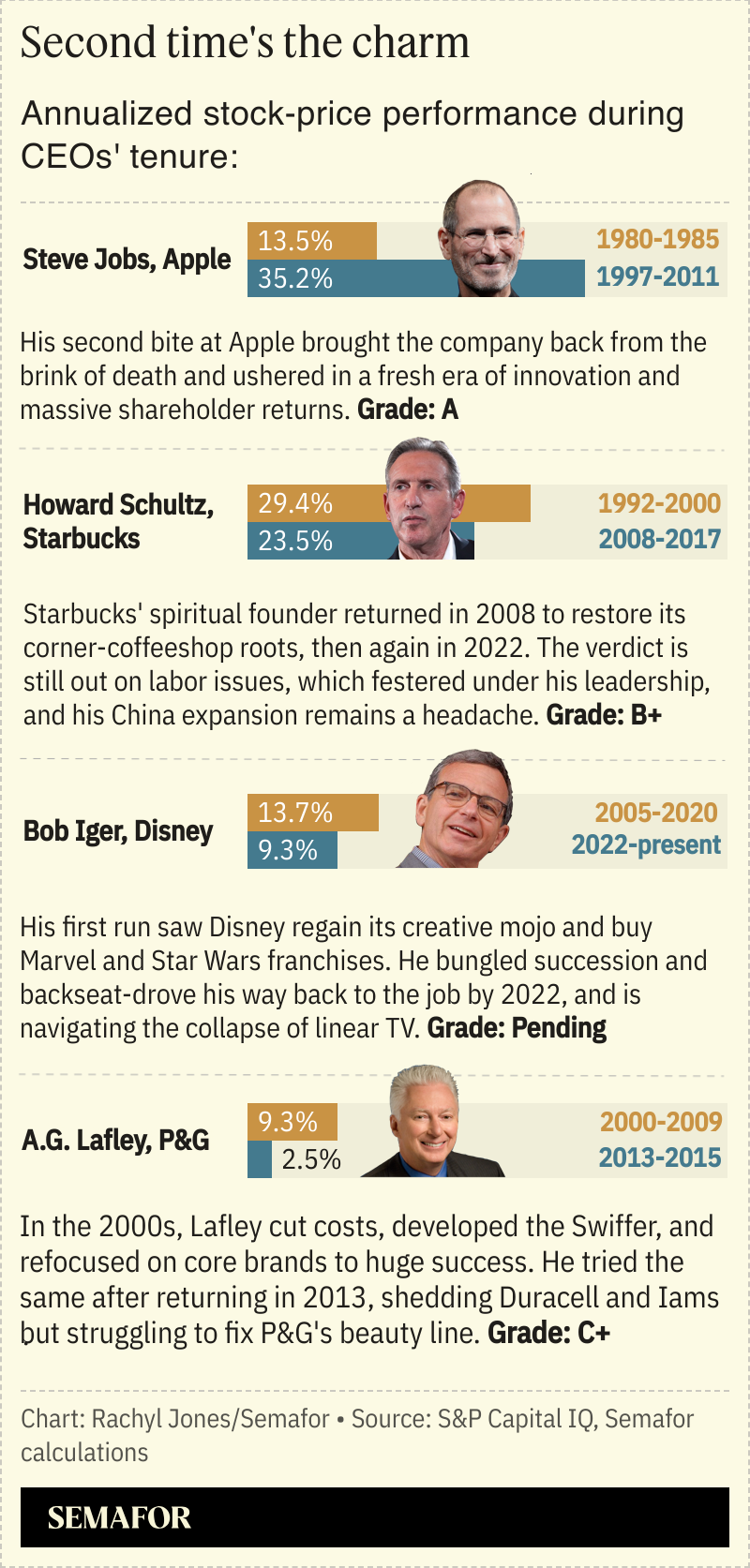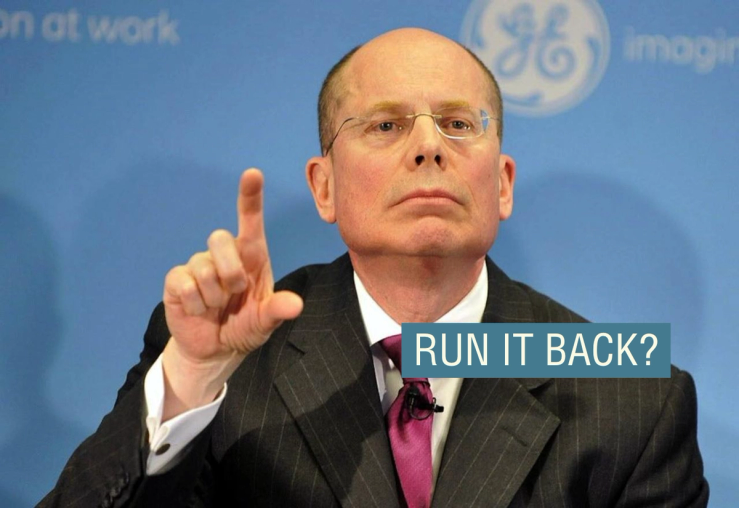The News
UnitedHealth is bringing back a former CEO to right a company in serious trouble. Stephen Hemsley, who retired in 2017 but remained on its board, takes over as the insurance giant faces spiraling costs and a criminal investigation into its Medicare billing, as it’s still reeling from the assassination of a top executive late last year.
Returning CEOs are corporate-governance safety blankets, brought back (or sometimes elbowing their way) in times of crisis. “There’s safety in someone familiar, who can relatively quickly parachute in,” Constantine Alexandrakis, CEO of search firm Russell Reynolds, told Semafor. Does it mean the board has bungled succession? “Not necessarily,” he said. “But it means there was no one ready inside the organization who trumped the boomerang option.”
(There is, notably, a boomerang boss in the Oval Office too.)

They tend to be big personalities deeply entwined with their companies — Bob Iger at Disney, Howard Schultz at Starbucks — though the low-key Hemsley doesn’t fit that bill. Jerry Yang’s return at Yahoo was a dud, while Steve Jobs famously saved Apple.
Researchers at MIT Sloan School of Management found that boomerang CEOs on average underperform the market.
“Our data and analysis suggest that boomerang CEOs may be either unable or unwilling to make necessary strategic changes when they return to lead the companies they founded,” they wrote.
Notably, that underperformance — 10% annually — held firm even when benchmarked against non-boomerang CEOs who were hired in times of crisis.
Notable
- Further reading: One boomeranger to another — Procter & Gamble’s A.G. Lafley had some advice for Iger. “Be humble.”

